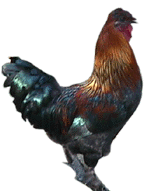After attending Sunday School and church Sundays, Johnny and I sometimes would go bee tree hunting in the woods. We would take honey, if available: if not, some brown sugar, put the honey or sugar in a saucer, place it on a log or stump and wait for a honeybee to show up. While the bee was loading up we would drop a little flour on his back so we could spot that bee when it returned for another load. We would note the direction the bee took and move the saucer some distance in the direction the bee flew and again place it on a log or stump and wait for the return of the bee with the white flour on its back. We would continue to follow the bee to its home in a tree in this way. We were not always successful, but we did locate three bee trees in this way.
We got a man or two to help cut down the trees and take home the wild honey This was done at night when the bees were not out and with the aid of lanterns. When the bee tree fell, the hollow part containing the honey usually split open. A pan or two containing coals was placed under where the bees and honey were and sulphur was sprinkled on the coals to produce a gas that stunned or killed the bees, so we could take out the honey, after an axe had opened up the trunk or limb of the tree. Our average take of honey from these bee trees was two to three eight quart pails of honey. Part of the comb was usually quite old and dark colored with a very strong honey flavor. Some prefered it to the newer honey. Some of us usually got stung, but that was not unexpected.

